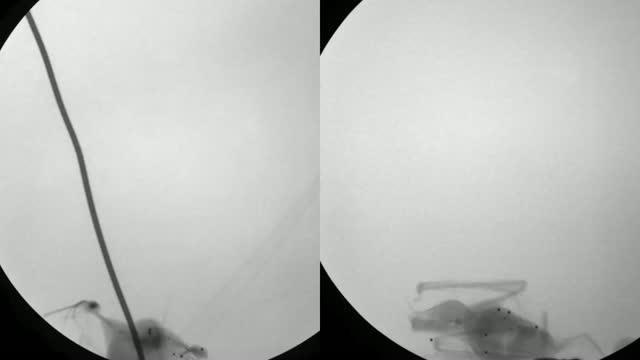Bats are uniquely able to stretch and store energy in their bicep and tricep tendons during take-off and climbing flight, giving them an extra power boost. A new study on fruitbats, to be presented at the meeting of the Society for Experimental in Valencia on July 4, used cutting edge technology to image how these small mammals move through the air.
Dr Nicolai Konow (Brown University, USA), who led the research said: "Energy is stored in the triceps tendon, which is used to power elbow extension – in essence, elbow extension happens using "recycled" energy. State of knowledge, and our results, indicates that bats are unique among small mammals in stretching their tendons, as small mammal limb tendons are thought to be too thick and stiff to be stretched."
"By combining information about skeletal movement with information about muscle mechanics, we found that the biceps and triceps tendons of small fruitbats are stretched and store energy as the bat launches from the ground and flies vertically."
The researchers used a cutting edge 3D imaging technology called XROMM (X-ray Reconstruction of Moving Morphology) that allows visualizing rapid internal skeletal movement. XROMM combines 3D models of bone morphology with movement data from biplanar x-ray video to create highly accurate re-animations of the 3D bones moving in 3D space. The researchers also used a novel method called fluoromicrometry, where small radio opaque markers are implanted directly into muscle, which allows measuring length change with high precision and accuracy during contractions.
These findings indicate that the action of muscles powering animal movements through fluids may be influenced by series elasticity, and that at least some limb tendons in small mammals can be stretched by muscular and aerodynamic forces, enabling force control of joint movement.
This research will likely have relevance for the development of autonomous micro aircrafts and potentially also amphibious search and rescue vehicles.

A new study used cutting edge technology to image how Seba's short tailed fruitbats move through the air.
(Photo Credit: Brock Fenton, U.W.O.)

This video shows high-speed light video of the take off and climbing flight behaviors of the Seba's short tailed fruitbat.
(Photo Credit: Nicolai Konow & Rhea von Busse, the Aeromechanics and Evolutionary Morphology Laboratory at Brown University)

This is a composite video, showing two orthogonal high-speed xray views of a Seba's short tailed fruitbat taking off from the ground and transitioning into vertical ascending flight towards a landing area (out of view). Onto the biplanar high speed videos, the researchers rotoscoped the micro CT scans of scapulum (shoulder-blade), humerus (upper arm bone) and radius (lower arm bone). In this way, they achieved a new set of raw measurements, showing how the mammalian scapulum moves a lot during flight, involving both translations and rotations. The researchers also used this XROMM model to understand how the biceps muscle tendon unit changes length. Like in humans, the biceps spans both the shoulder and elbow joints. This anatomy represents a biomechanical problem, because measuring elbow flexion and extension does not reveal the length of the whole muscle tendon unit. Therefore, the researchers needed the XROMM model to understand biceps contraction biomechanics, which helped them reveal that the biceps tendon is being stretched during a wingbeat cycle.
(Photo Credit: Nicolai Konow & Rhea von Busse, the Aeromechanics and Evolutionary Morphology Laboratory at Brown University)
Source: Society for Experimental Biology